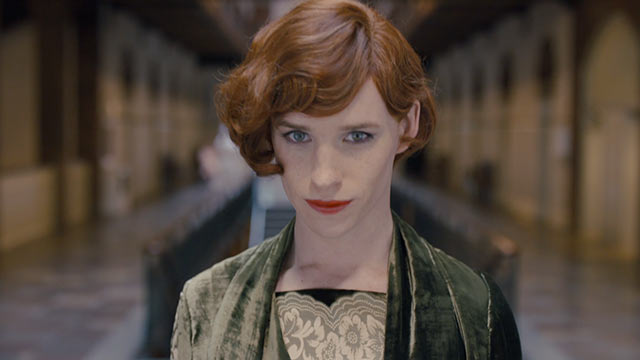
Director Tom Hooper’s The Danish Girl tells the fictionalized true story of 1920’s Danish landscape artist Einar Wegener (Eddie Redmayne), and his journey into becoming the first known recipients of sex reassignment surgery. The film also tells the tale of Einar’s portrait artist wife, Gerda (Alicia Vikander), as she aids in her husband’s transformation into his new life as Lili Elbe.
I must first say that Eddie Redmayne is absolutely mesmerizing in his portrayal of Einar/Lili. Redmayne earned his second Best Actor nomination in as many years for the role (his last bringing home the Oscar for the Stephen Hawking biopic The Theory of Everything). At the time of this review, the Oscars are still a few weeks away, so whether the performance will bring him home the Academy Award this year has yet to be seen, but the nomination is well deserved. Ironically, Redmayne has also been nominated for a Razzie for Worst supporting Actor, for his role in the critically panned Jupiter Ascending (only a few actors have won both, the last being Sandra Bullock, who won both in the same year). Redmayne completely transforms when he is Lili, However, the character of Einar/Lili is tragically underwritten, as we’re given only a surface level understanding of the character’s true emotional and psychological state. The same can be said of Gerda, as well. Vikander gives a great performance (earning an Oscar nomination as well), but we’re never really given the opportunity to delve into her emotional journey.

I felt while watching the film that the story is likely considerably more multilayered than depicted, with only certain layers having been explored. Upon doing some inquiries of my own on the actual events, my suspicions were in fact validated. Not that one should judge a film on it’s historical accuracy, but even at the cinematic level, it just appeared that parts of the story were missing. In an effort to concentrate on the transformation of Einar into Lili, and on the relationship between Einar/Lili and Gerda, there are certain elements that seem rushed, or glossed over entirely. Einar’s realization, or acceptance, that his life was to be that of a woman comes relatively quickly in the film. While events are obviously condensed or sped up of the purpose of time, it feels a bit rushed. I would imagine a realization of this magnitude would have slowly developed for Einar. Again, this is just a film adaption of actual events, but a little more time spent on Einar’s discovery would have benefited the film. While Ebershoff’s novel was based on Lili’s autobiography, he was forced to completely fictionalize the character’s inner monologue and motivations, as the autobiography only goes into limited detail. This is very evident in the film translation. I was also left wondering how the transformation into Lili affected Einar’s other loved ones. It turns out, many of Einar’s friends completely disassociated themselves with Lili, causing her to struggle with the notion that she had murdered Einar. This, to me, is a completely fascinating subject for further exploration, but it is not touched on at all in the film.
Filmmakers during the Golden Age of cinema used to use vaseline on their lenses to soften the focus and further enhance the beauty of their starlets. That’s what I feel was done with the story here. It’s a beautiful and emotional tale, but one that was told through a soft lense, with not enough depth as one would prefer. The Danish Girl will be available on Blu-ray on March 1, 2016.
BLU-RAY SPECS
EXTRAS- The only extra on the Blu-ray is a Making of Featurette, which is interesting enough, though it does not provide enough information to justify it being the only extra feature. In fact, the Blu-ray as a whole is disappointing, as even the menu interaction is that of an early, or even homemade, DVD menu. At this point in the progress of Blu-rays, this shouldn’t be acceptable, given the price you pay.
Blu-ray/Digital H
Codec: MPEG-4 AVC
Resolution: 1080p
Aspect ratio:1.85:1
English DTS-HD Master Audio 5.1
French DTS 5.1
Subtitles:English SDH, French, Spanish

